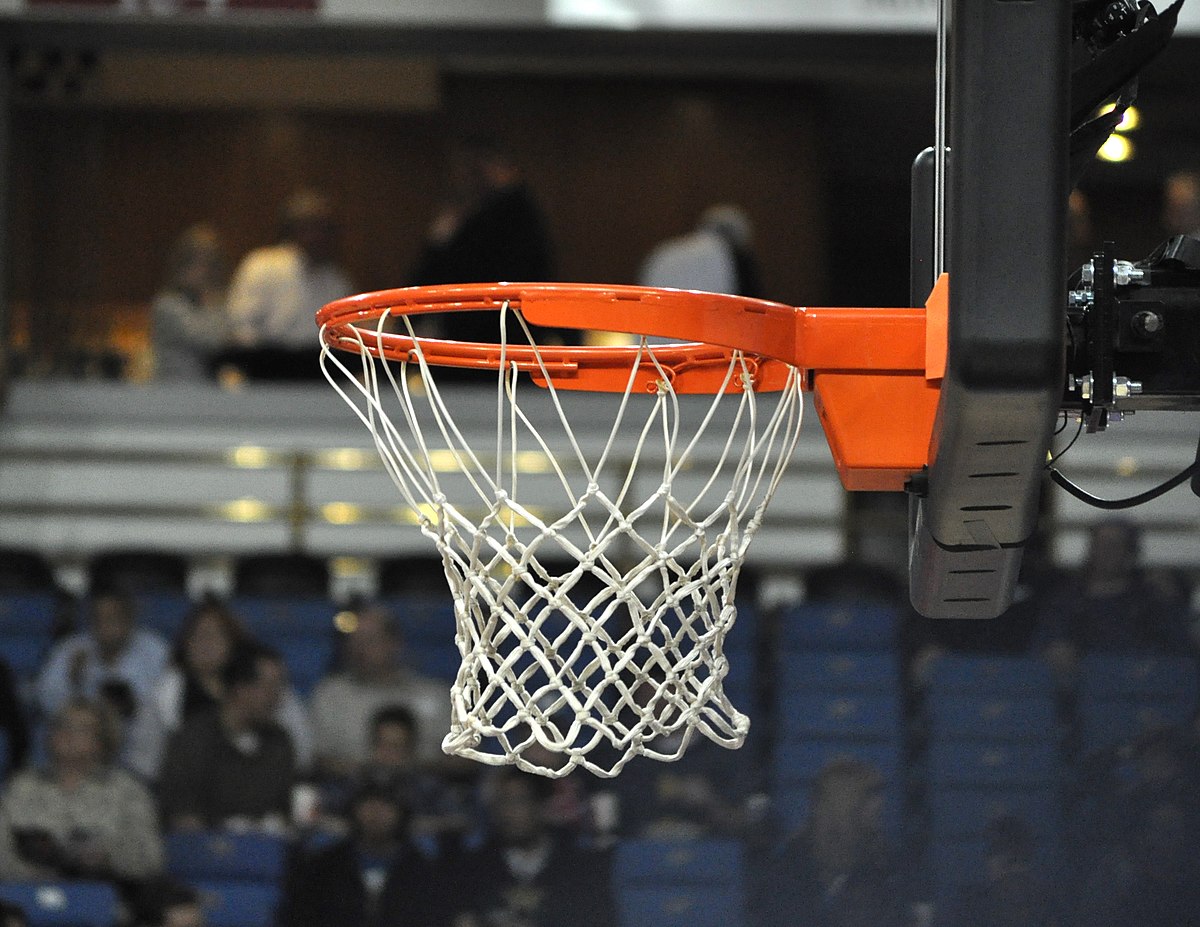The diameter of a basketball hoop is 18 inches. Basketball rims typically have a diameter of 18 inches, making it the standard size for men’s basketball hoops.
Table of Contents
ToggleUnderstanding The Importance Of Basketball Hoop Dimensions
Importance Of Knowing Basketball Hoop Dimensions
When it comes to basketball, understanding the dimensions of the basketball hoop is vital. Whether you are a player, a coach, or simply a basketball enthusiast, knowing the exact measurements of the hoop can greatly enhance your game play and performance. It allows you to have a better understanding of how to approach shooting, rebounding, and blocking shots. In this section, we will delve into the impact that basketball hoop dimensions have on the game and why it is crucial to have this knowledge.
Impact on Play And Performance
The size and dimensions of a basketball hoop can have a significant impact on the overall gameplay and performance. By understanding the exact diameter of a basketball hoop, players can fine-tune their shooting techniques accordingly. A standard basketball hoop has a diameter of 18 inches, and this knowledge allows players to better aim their shots with precision and accuracy.
Furthermore, the dimensions of the basketball hoop can also affect rebounding and shot-blocking. A larger diameter hoop can make it easier for players to grab rebounds, as they have a bigger target to aim for. On the other hand, a smaller hoop can make shot blocking more challenging, as the defender has less room to contest the shot.
Ensuring Consistency And Fairness
Knowing the dimensions of a basketball hoop is not only important for individual player performance, but it also ensures consistency and fairness in the game. By adhering to the standard diameter of 18 inches, players can compete on a level playing field. It eliminates any potential discrepancies and provides a fair and balanced environment for all participants.
Additionally, understanding basketball hoop dimensions is crucial for referees and officials. They need to ensure that the hoop meets the standard requirements and is properly installed. This ensures that the game is played under the correct conditions, and any potential scoring controversies can be avoided.
In conclusion, knowing the exact dimensions of a basketball hoop is essential for any basketball player, coach, or enthusiast. It impacts the gameplay and performance of individuals, while also ensuring fairness and consistency. By understanding these dimensions, players can improve their shooting accuracy, rebounding skills, and shot-blocking abilities. So, the next time you step on the court, remember the importance of basketball hoop dimensions and how they can elevate your game to the next level.
Exploring The Standard Dimensions Of A Basketball Hoop
Official Dimensions Of A Standard Basketball Hoop
When it comes to the game of basketball, understanding the dimensions of a standard basketball hoop is essential. The official dimensions, as specified by the governing bodies of the sport, are crucial for ensuring fair play and consistent gameplay. Let’s dive into the details of the standard dimensions of a basketball hoop.
Diameter Measurement Explained
In order to determine the diameter of a basketball hoop, we must first understand the components that make up a hoop. A basketball hoop consists of the rim and the backboard. The rim is the circular metal hoop that the basketball must pass through, and the backboard is the rectangular board to which the hoop is attached. The diameter of a basketball hoop refers to the distance across the opening of the rim.
The standard diameter of a basketball hoop is 18 inches. This measurement applies to regulation-sized hoops used in various levels of play, from professional leagues to recreational settings. It is important to note that the diameter is measured from the inner edges of the rim. This ensures consistency in determining whether a shot has successfully gone through the hoop or not.
It is worth mentioning that the diameter measurement may vary slightly in non-standard or customized basketball hoops. However, for official gameplay and recognized competitions, the standard diameter remains consistent to uphold fair competition and ensure all players have the same challenges and opportunities.
Factors Influencing The Diameter Of A Basketball Hoop
Factors Influencing the Diameter of a Basketball Hoop Regulations and Governing Bodies According to regulations set by various governing bodies, the diameter of a basketball hoop is standardized to ensure fair and consistent gameplay across different levels. The most widely recognized governing body for basketball is FIBA (International Basketball Federation), which sets the standards for international play. According to FIBA, the diameter of a basketball hoop should measure 45 centimeters or approximately 17.72 inches. This standard applies to both professional and amateur levels of play, including international competitions and national leagues. It is important for basketball courts to adhere to these regulations to maintain the integrity of the game. Variations in hoop size for different levels of play While the diameter of a basketball hoop remains consistent across all levels of play, there are variations in hoop size for different levels. This ensures that players of all ages and skill levels can enjoy the game and have an appropriate level of challenge. For instance, in youth basketball leagues, the hoop size is often reduced to accommodate the smaller size and abilities of young players. The most common hoop size for youth basketball is 9 feet, which helps develop their shooting skills while keeping the game enjoyable. As players progress to higher levels, such as high school or college basketball, the hoop size increases to the standard 10 feet diameter. In addition to variations in hoop size, the backboard dimensions also differ based on the level of play. The backboard is the rectangular board behind the hoop that provides a surface for bank shots and rebounds. In professional basketball, the backboard measures 72 inches wide and 42 inches tall. However, in high school and college basketball, the backboard is slightly smaller, measuring 72 inches wide and 36 inches tall. These variations in backboard dimensions, along with hoop size, contribute to the unique characteristics and challenges of each level of play. It is essential for players, coaches, and administrators to understand and adhere to the regulations set by governing bodies to ensure fair and consistent gameplay. By maintaining standardized hoop sizes and backboard dimensions, basketball remains a universally recognized and enjoyable sport across all levels of play. In conclusion, the diameter of a basketball hoop is influenced by regulations set by governing bodies like FIBA. These regulations ensure fair and consistent gameplay across different levels of play, while still allowing for variations in hoop size and backboard dimensions to cater to the skill level and age of players. Understanding these factors is crucial for anyone involved in the sport of basketball and contributes to the overall integrity and enjoyment of the game.

Credit: en.wikipedia.org
Comparing The Men’s And Women’s Basketball Hoop Dimensions
Differences In Hoop Dimensions Between Men’s And Women’s Basketball
When it comes to basketball, the dimensions of the hoop can have a significant impact on the overall gameplay and strategy. While the objective of the game remains the same for both men’s and women’s basketball, there are slight differences in the diameter of the hoop that can make a difference in the shooting accuracy and scoring opportunities. Let’s dive into the specifics of how the hoop dimensions differ between these two versions of the game.
Impact On Gameplay And Strategy
The differences in hoop dimensions between men’s and women’s basketball can have a direct impact on the overall gameplay and strategic approach of the teams.
1. Shooting Accuracy:
In men’s basketball, the standard diameter of the hoop is 18 inches (45.7 cm), while in women’s basketball, it is slightly smaller at 17.75 inches (45.1 cm). This slight variation in diameter might seem insignificant, but it can affect shooting accuracy. With a smaller hoop, women players have a smaller target to aim for, requiring them to be more precise with their shots. In contrast, men players have a slightly larger target to aim for, giving them a slightly higher margin of error.
2. Scoring Opportunities:
The differences in hoop dimensions between men’s and women’s basketball can also influence scoring opportunities during the game. With the smaller diameter in women’s basketball, there may be fewer successful shots made from longer distances compared to men’s basketball. The smaller hoop may encourage women players to focus more on mid-range shots, layups, and closer shots, as these have a higher chance of going in.
3. Defensive Strategies:
The hoop dimensions can also influence defensive strategies employed by teams. In women’s basketball, where the hoop is slightly smaller, defenders may be more aggressive in contesting shots, knowing that the target area is smaller. This can lead to a more physical and intense defensive style. In contrast, defenders in men’s basketball may focus more on positioning and blocking as they have a slightly larger area to protect.
In conclusion, while the differences in hoop dimensions between men’s and women’s basketball may seem minor, they can have a significant impact on the game. The smaller diameter in women’s basketball requires players to be more precise in their shooting, affecting shooting accuracy and potentially altering scoring opportunities. It also influences defensive strategies employed by teams. Understanding these variations can help teams and players adapt their gameplay and strategies accordingly.
Common Misconceptions And Fun Facts About Basketball Hoop Diameter
When it comes to basketball, every detail matters, including the diameter of the hoop. There may be some common misconceptions and interesting facts that you may not be aware of when it comes to basketball hoop dimensions. In this section, we will debunk some of these misconceptions and share fun facts and trivia about the size of basketball hoops.
Debunking Common Misconceptions About Hoop Size
There are a few misconceptions floating around about the diameter of a basketball hoop. Let’s take a look at these misconceptions and set the record straight.
-
- Misconception: The diameter of a basketball hoop is the same at all levels of play.
Contrary to popular belief, the diameter of a basketball hoop can vary depending on the level of play. In the NBA, the standard diameter of the hoop is 18 inches, while in college and high school basketball, the hoop has a diameter of 17.75 inches. This slight difference can have an impact on the game and requires players to adjust their shots accordingly.
-
- Misconception: The rim size determines the ball size used in a game.
This is another common misconception. The size of the ball used in a basketball game is not determined by the diameter of the hoop. Instead, it is determined by the age and skill level of the players. For younger players, smaller balls are used to make it easier for them to handle and shoot. As players progress to higher levels, larger balls are used to increase the challenge and improve their skills.
-
- Misconception: The rim is the only important factor when considering the diameter of a basketball hoop.
While the rim is an essential component of the basketball hoop, it is not the only factor to consider when talking about the diameter. The backboard also plays a crucial role in determining the diameter. In professional games, the backboard extends beyond the rim, making the effective diameter slightly larger than the actual rim diameter.
Interesting Facts And Trivia About Basketball Hoop Dimensions
Now that we’ve debunked some common misconceptions, let’s explore some interesting facts and trivia about the dimensions of basketball hoops.
-
- Fact: The diameter of a basketball hoop was not always standardized.
In the early days of basketball, there were no standardized dimensions for the hoop. The size of the hoop varied depending on the location and the materials available. It wasn’t until the late 1950s that the National Basketball Association (NBA) established the standard 18-inch diameter for professional games.
-
- Fact: The diameter of a basketball hoop is the same for men’s and women’s basketball.
Regardless of the level of play, the diameter of the basketball hoop remains consistent for both men’s and women’s basketball. This ensures a level playing field and fair competition between male and female athletes.
-
- Fact: The diameter of a basketball hoop can significantly impact shooting percentages.
The relatively small difference in hoop diameter between the NBA and college/high school basketball may not seem significant, but it can have a noticeable impact on shooting percentages. Players who are accustomed to shooting on a size hoop may face challenges when transitioning to a different size, requiring them to adjust their shooting technique.
Now that you know the common misconceptions and fun facts about basketball hoop diameter, you can impress your friends with your basketball knowledge. Understanding these dimensions can help you appreciate the intricacies of the game and how even the smallest details can make a difference on the court.
Frequently Asked Questions Of What Is The Diameter Of A Basketball Hoop?
What Is The Diameter Of A Men’s Basketball Hoop?
The diameter of a men’s basketball hoop is 18 inches.
What Size Hoop Is The Nba Vs Wnba?
The NBA hoop size is 18 inches in diameter, while the WNBA hoop size is also 18 inches.
Can Two Basketballs Fit In A Rim?
Yes, two basketballs can fit in a rim.
What Is The Standard Diameter Of A Basketball Hoop?
The standard diameter of a basketball hoop is 18 inches. This measurement ensures that the ball fits snugly through the hoop for fair and accurate scoring.
Conclusion
To sum up, the diameter of a standard basketball hoop is 18 inches. This dimension is common across various basketball leagues and levels. Understanding the size of the hoop is essential for players to improve their shooting accuracy and skills.
Whether you’re a professional or casual player, knowing the diameter of a basketball hoop is a fundamental aspect of the game. It ensures fairness and consistency in play, allowing everyone to enjoy the sport to its fullest potential. So, keep practicing those shots and make the most of your time on the court!






